We recently published an interview with Oliver Bimber, head of the Institute of Computer Graphics at Johannes Kepler University Linz, in which we went into the subject of light-field photography. On January 31, 2013, our interviewee will be the star of a Deep Space Live. To provide a sneak preview of what light-field photography is all about, we asked David Schedl, a leading light on Bimber’s staff, to go on a photo safari in and around the Ars Electronica Center and to take along a Lytro, a very popular, compact camera to photograph light fields.
This is how a Lytro looks. That’s the Ars Electronica Center in the background. With conventional photography, you have to decide on a degree of sharpness. So, we decided to focus on the camera since everybody already knows what the AEC looks like.
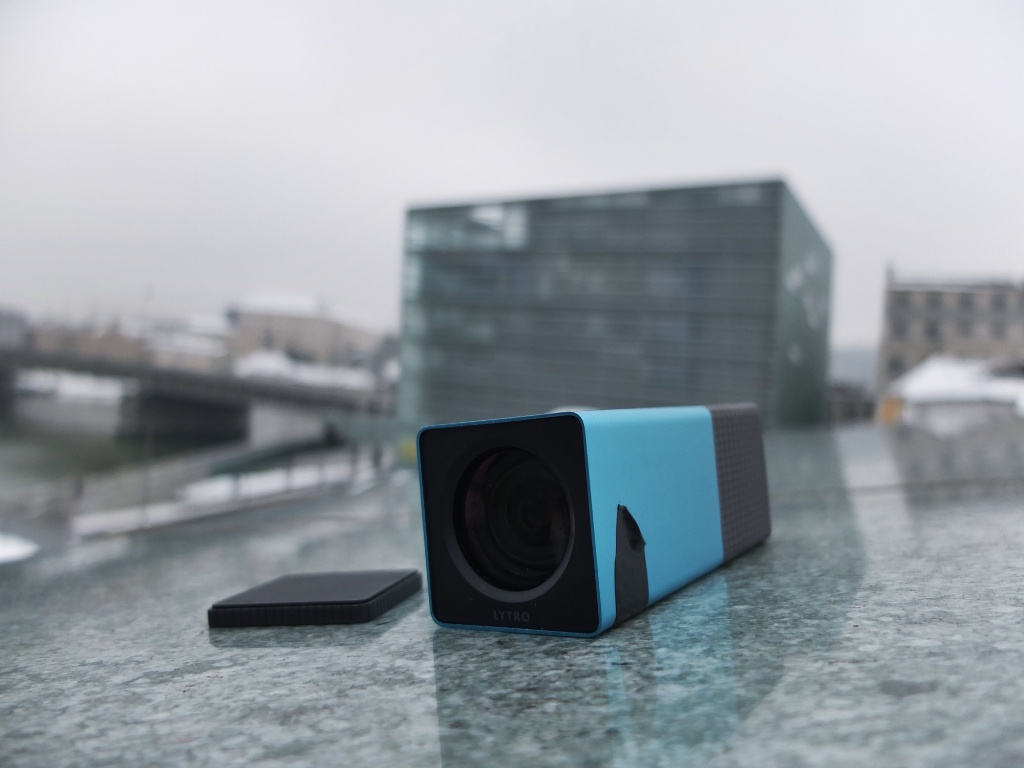
Here’s the corresponding Lytro image, but first a couple of words how to use them: Click on any area of the picture to focus on this area, double-click on it to zoom in. You can click and drag the mouse to change the perspective. Because light-field-photographs can capture a multitude of perspectives, you can generate 3d-pictures of any scene you choose, so if you have the right display, such as the one in the Deep Space for example, you can browse through your pictures in 3d.
Using a Lytro is relatively simple. You frame the image, select the center of the picture by pressing the touchscreen—which can also be used to adjust the lighting and other variables—and then press the shutter release built into the top surface of the device. You can zoom in and out by sliding your finger to the left or right along the upper edge.
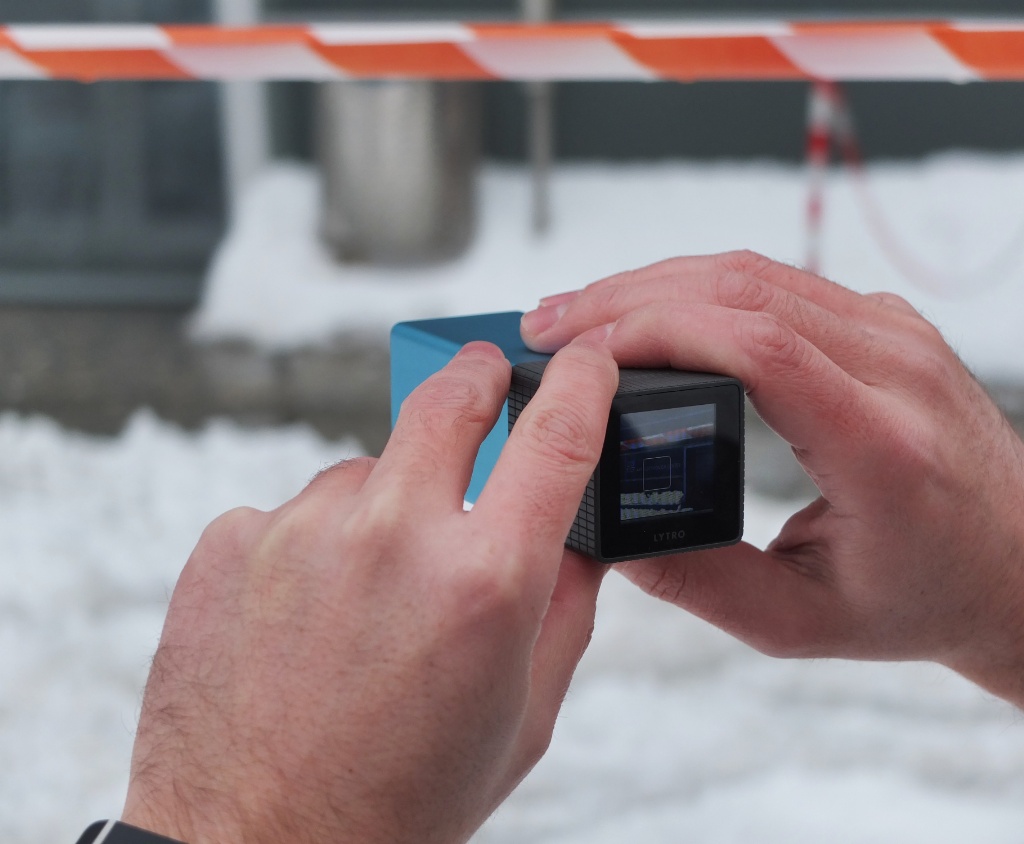
The following two shots clearly illustrate the advantage of light-field photography. With a conventional camera, you’re forced to decide on one letter to be in sharp focus. Of course, you could choose to go with a smaller aperture setting to increase the depth of field; nevertheless, you still can’t get all the lettering in focus from this angle. The basic principle is: The smaller the aperture (and therefore the larger the f-stop number is—for example, 1:2.8 or 1:3.5), the greater the depth of field, but that also reduces the amount of light permitted to pass through the lens, which can produce an image that’s insufficiently illuminated (simply put: isn’t bright enough). To compensate for that, you can either choose a longer exposure time, which can lead to shakiness and an out-of-focus picture, or you could opt to increase the light sensitivity of the image sensor, the ISO number, which, in turn, can lead to problems with picture quality—for example, to so-called image noise or graininess (whereby colors aren’t depicted correctly).
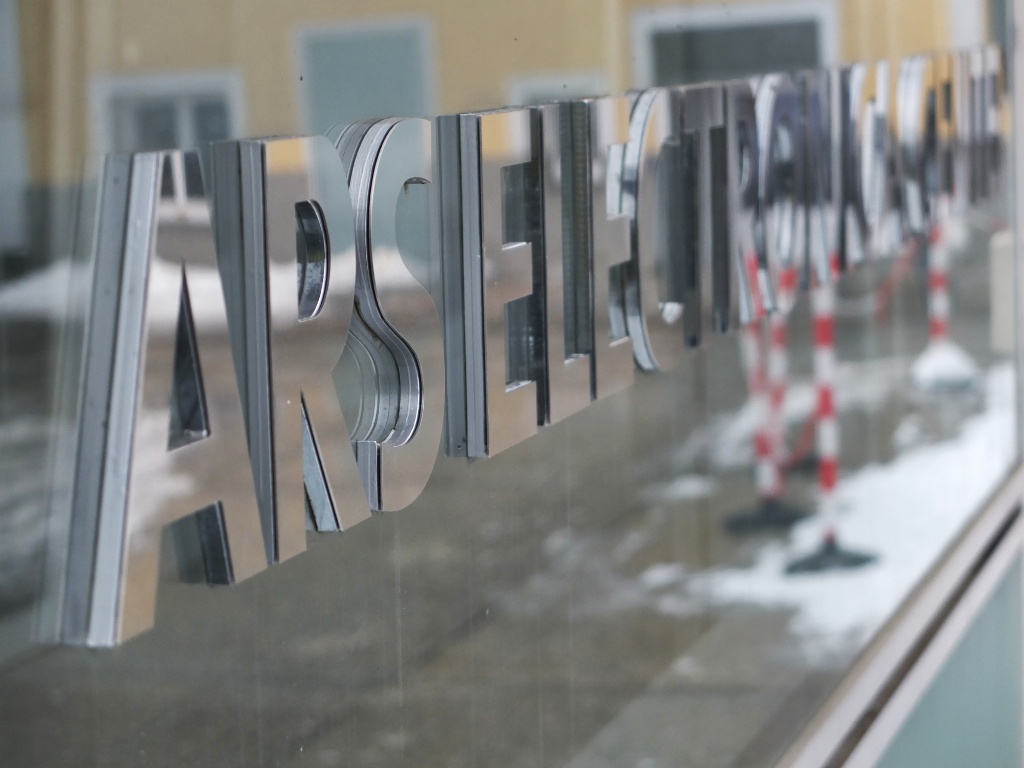
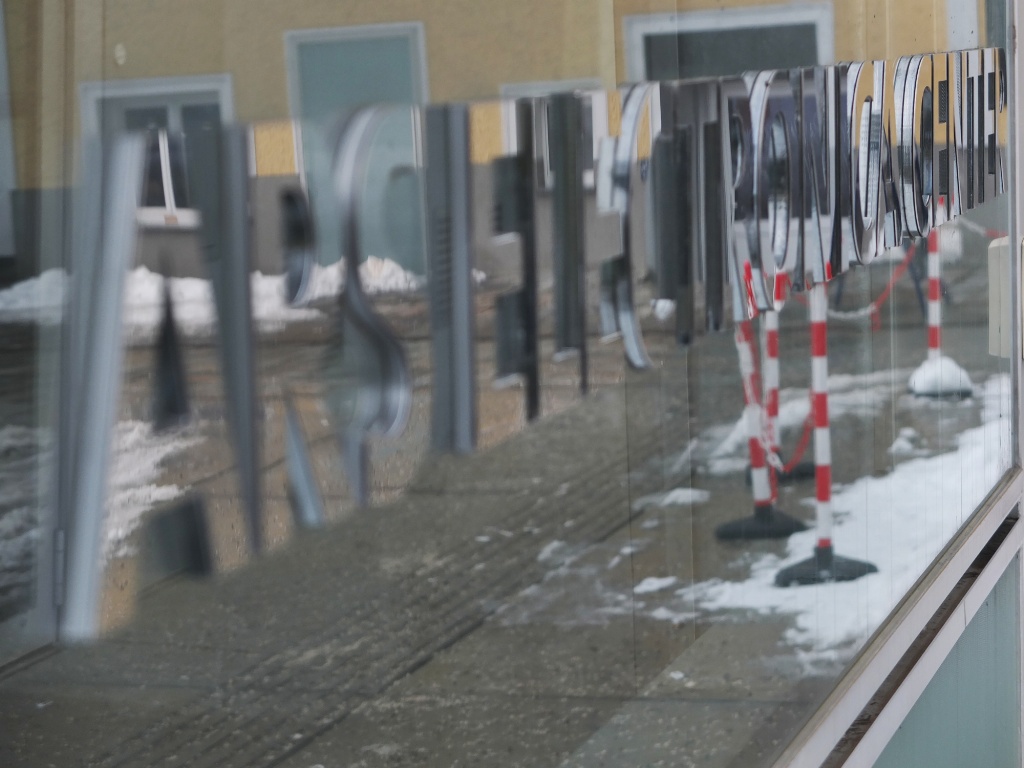
With the Lytro, you don’t have to decide on a specific depth of field. Every single letter is in focus, and the whole sequence of lettering too. Try it out for yourself!
Looking over David Schedl’s shoulder as he lytrographs mobility.
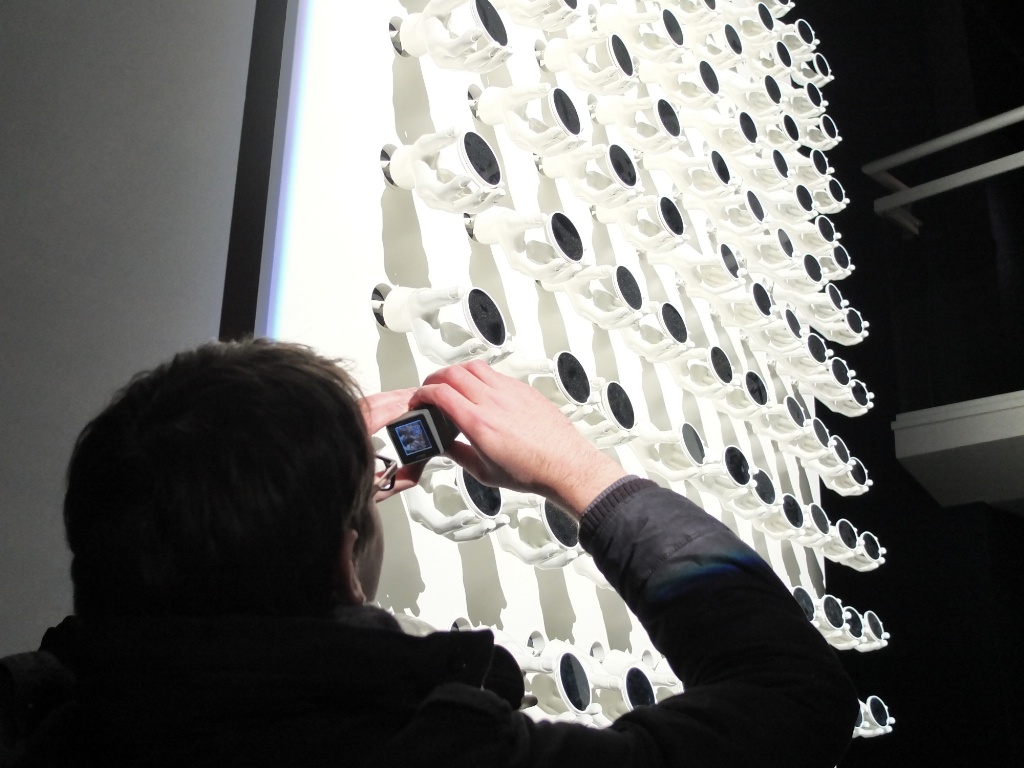
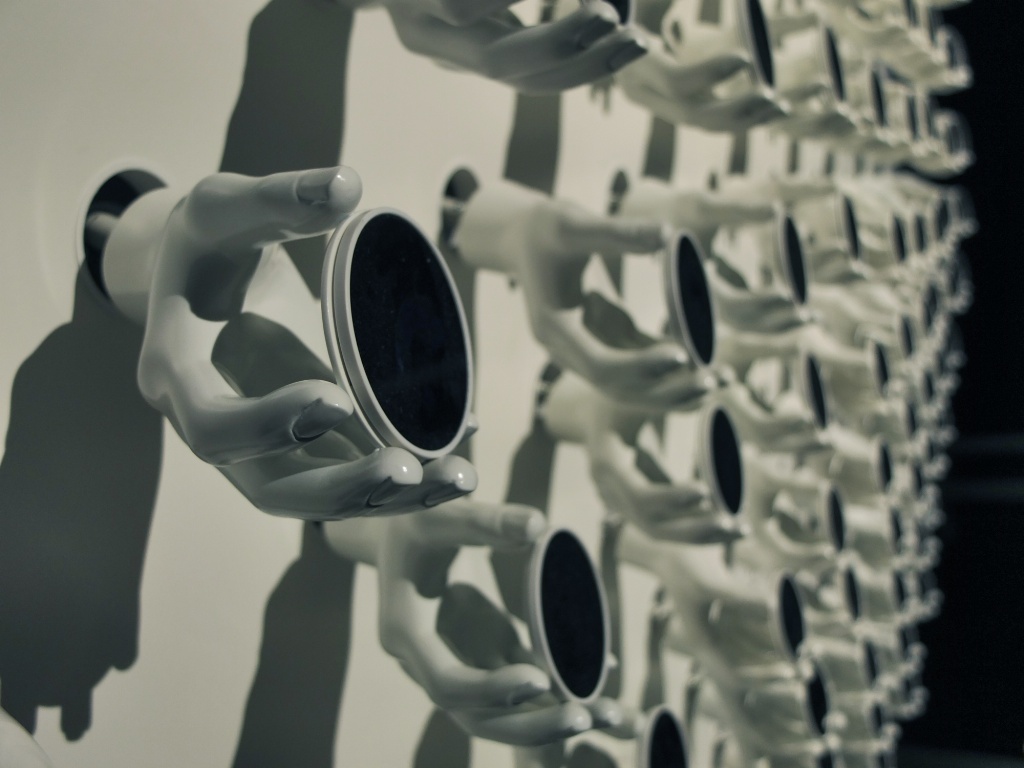
And here the shot taken with the Lytro:
Here are two more examples of how users of a “normal” camera are forced to make decisions about how the picture will appear.
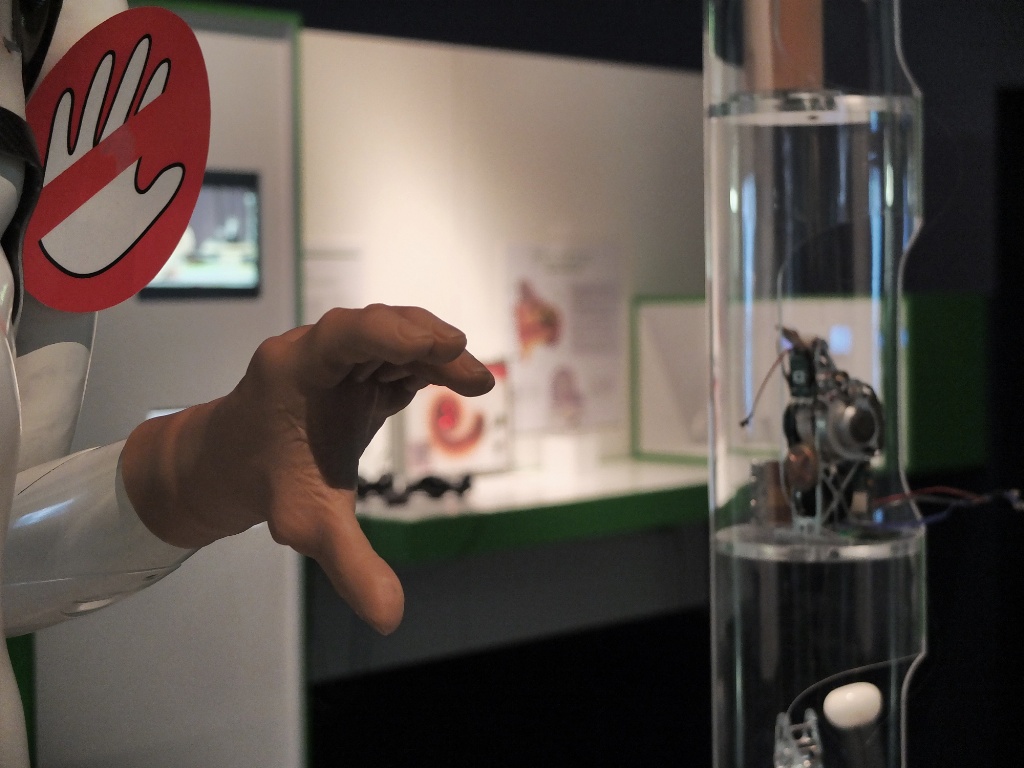

And the Lytro variant:
Additional photos can be viewed on the JKU’s Lytro account. On January 31st, really great light-field images will be presented in Deep Space to highlight this technology’s potential. This is a don’t-miss opportunity for shutterbugs!